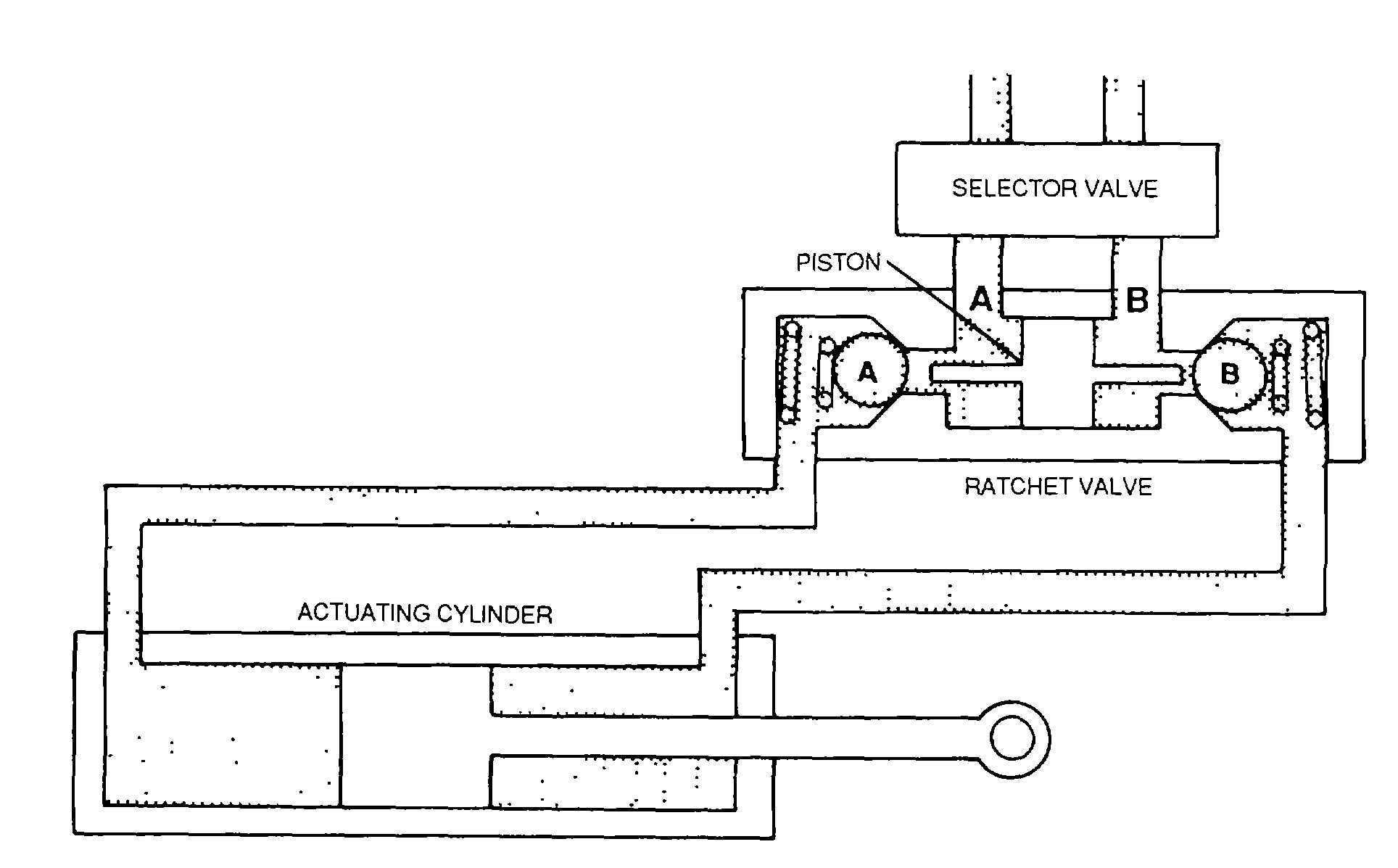TM 1-1500-204-23-2
cylinder housing is stationary and the piston moves is used for the following explanation of basic servo operation and of
servo sloppy finks and bypass valves. Such a servo is shown in figure 4-138.
(2)
Operation. To exemplify servo operation, let us assume that the servo pilot valve has been
moved a given distance to the right from the off position and is to be held there. If the given distance is 0.250 Inch, the
following will result:
•
Fluid under pressure will flow through the now unblocked selector valve cylinder port and will enter the
left chamber of the servo cylinder housing.
•
The piston will be forced to the right and will carry the selector valve housing with it since that housing is
welded to the piston rod.
•
When the piston has moved to the right exactly 0.250 inch, the selector valve housing will have moved
to the right over the now stationary pilot valve. This will result in returning the selector valve to the off
position. Since the flow of fluid is now stopped, the piston will travel no farther.
j.
Irreversible Valves. Irreversible valves assist hydraulic servos in a manner similar to that in which
ratchet valves assist actuating cylinders. Both ratchet valves and irreversible valves provide defense against movement
of the unit by an externally applied force. Irreversible valves are used with hydraulic servos in a helicopter flight control
system to block the travel of feedback forced from their point of organ in the rotor head and blades to the control stick
figure 4-139 illustrates basic operation of the Irreversible valve. The check valve in this mechanism allows fluid from the
pump to flow in the normal direction as shown by the arrows. However, feedback force tends to move the servo piston in
the opposite direction to the pump produced pressure. This tends to force fluid backward through the irreversible valve
The check valve blocks this rearward flow of fluid and keeps the servo piston from yielding to feedback force. The relief
valve serves as a safety device to limit the pressure produced by feedback-induced movement of the servo piston. It
opens to allow fluid to bypass to the return line if the feedback-produced pressure exceeds a preset safe limit.
Figure 4-136. Ratchet Valve (Static)
4-137

